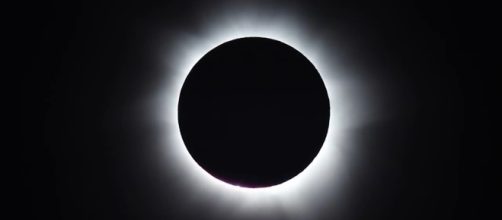On Monday, August 21, 2017, the entire population of the contiguous United States -- which includes 48 states, omitting Hawaii and Alaska -- will have the opportunity to witness the first Total Solar Eclipse since June 8, 1918. While they aren't necessarily rare, this occasion is special due to the fact that all Americans can travel in close proximity to witness the phenomenal spectacle should they choose to do so. Those who don't want to leave their homes will most certainly be able to see a Partial Solar Eclipse, which is still a sight for sore eyes.
Speaking of sore eyes, NASA suggests wearing some sort of eye protection capable of withstanding significant radiation during this short occurrence. The last time the path of totality was exclusive to the present-day United States was approximately 760 years ago.
What is a total solar eclipse?
In essence, a total solar eclipse is when the moon directly crosses the path between the Earth and the sun. In that exact instance, the moon will block the sun entirely, covering its tenuous atmosphere -- the corona. Although this circumstance does happen on occasion, its rarity lies in the few minutes visible and the preciseness of a person's location on Earth. It's estimated that the longest period of time to view what is considered one of nature's most awe-inspiring sights is around two minutes and 40 seconds.
Back in 1979, UC Berkeley Professor of Astronomy and renowned eclipse enthusiast Alex Filippenko witnessed his first encounter when he was 15-years-old. He puts the rarity in perspective on UC Berkeley's YouTube channel in the video "Why you should never miss a total solar eclipse (especially this year's)." Toward the very end of the video Fillippenko says, "If you don't make an attempt to go to the location where a total solar eclipse is happening, one will visit you roughly every 380 years. This is a real opportunity for tens of millions of Americans and others throughout the world to see the total solar eclipse." Filippenko wouldn't miss the August 21 event for the world.
Admitted eclipse addict Alex Filippenko on why #eclipse2017 is not to be missed! https://t.co/GaCp8XX0r9
— UC Berkeley (@UCBerkeley) August 14, 2017
Where can I see the eclipse?
The viewing range will move from Salem, Oregon to Charleston, South Carolina. Those who wish to witness the total solar eclipse must travel within close proximity of its path, while those who prefer not to travel will still be able to see a partial solar eclipse, where the moon covers part of the sun's disk.
In 2 weeks on Aug. 21, people in North America will have the chance to see the solar #Eclipse2017. Here's a preview: https://t.co/DmWZLONy2S pic.twitter.com/PulEL70vRw
— NASA (@NASA) August 7, 2017
If you're expecting to travel, be prepared for heavy traffic and overcrowded towns.
Certain communities, like Hopkinsville, KY, are preparing for the event by adding additional cell phone towers and freeing up hospital vacancy by canceling same-day surgeries. The population of Hopkinsville is around 32,000, but Christian County, inside of where Hopkinsville is located, is expected to host around 100,000 people for the event.
"This is unlike anything this community has ever seen or will probably ever see again," Hopkinsville Solar Eclipse Marketing and Events Consultant Brooke Jung said per Fox News. "We've got people coming from 42 different states and 18 different countries."
Per NASA, the next total solar eclipse in the U.S. will happen on April 8, 2024, moving southwest from Maine to Texas.


